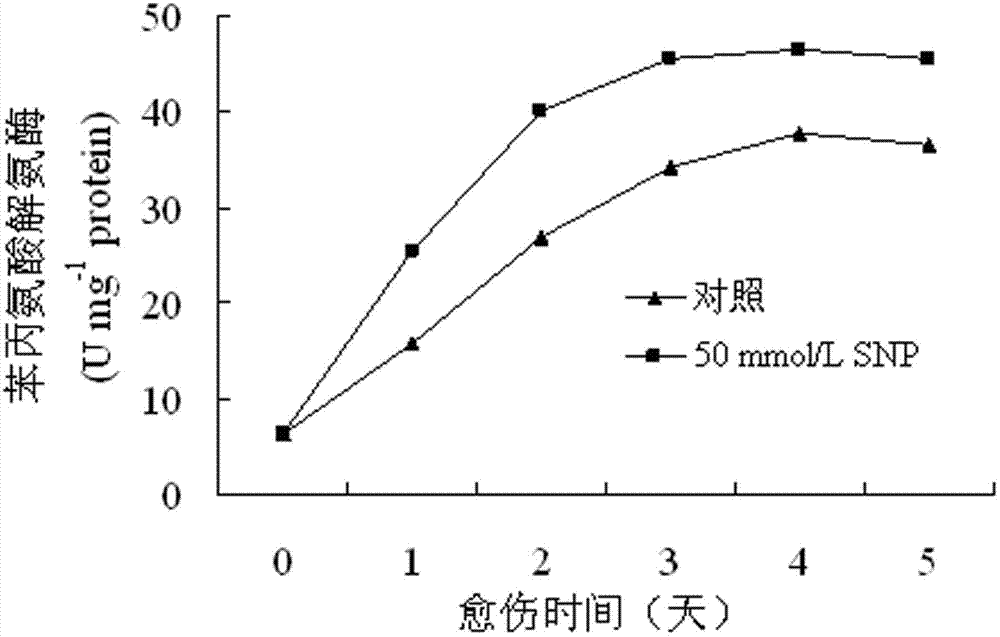Method for accelerating wound healing of sweet potatoes
A wound healing and sweet potato technology, which is applied in the field of improving the postharvest storage quality of sweet potato to achieve the effects of accelerating wood suberization, reducing decay loss and improving the activity of phenylalanine ammonia lyase.
- Summary
- Abstract
- Description
- Claims
- Application Information
AI Technical Summary
Problems solved by technology
Method used
Image
Examples
Embodiment 1
[0019] Select sweet potatoes harvested in good time, rinse with clean water to remove surface soil, drain off surface water droplets, and then dry with wind;
[0020] Put the above-mentioned sweet potatoes into a container, prepare a sodium nitroprusside (SNP) solution with a concentration of 10 mmol / L in anaerobic water, soak at room temperature for 1 hour, then remove, and bake at 45°C to remove surface moisture;
[0021] The treated sweet potatoes are healed for 5 days in an environment of 26°C and a relative humidity of 80%, and after the wounds are lignified, they are put into storage or marketed for circulation.
Embodiment 2
[0023] Select sweet potatoes harvested in good time, rinse with clean water to remove surface soil, drain off surface water droplets, and then dry with wind;
[0024] Put the above-mentioned sweet potatoes into a container, prepare a sodium nitroprusside (SNP) solution with a concentration of 50mmol / L in anaerobic water, soak at room temperature for 0.7h, then remove, and bake at 47°C to remove surface moisture;
[0025] The treated sweet potatoes were cured for 4 days in an environment of 28°C and a relative humidity of 82%, and after the wounds were lignified, they were put into storage or marketed for circulation.
Embodiment 3
[0027] Select sweet potatoes harvested in good time, rinse with clean water to remove surface soil, drain off surface water droplets, and then dry with wind;
[0028] Put the above-mentioned sweet potatoes into a container, prepare a sodium nitroprusside (SNP) solution with a concentration of 100mmol / L in anaerobic water, soak it at room temperature for 0.5h, then remove it, and dry it at 45°C to remove the surface moisture;
[0029] The treated sweet potatoes are healed for 3 days in an environment of 31°C and a relative humidity of 85%, and after the wounds are lignified, they are put into storage or marketed for circulation.
PUM
 Login to View More
Login to View More Abstract
Description
Claims
Application Information
 Login to View More
Login to View More - R&D
- Intellectual Property
- Life Sciences
- Materials
- Tech Scout
- Unparalleled Data Quality
- Higher Quality Content
- 60% Fewer Hallucinations
Browse by: Latest US Patents, China's latest patents, Technical Efficacy Thesaurus, Application Domain, Technology Topic, Popular Technical Reports.
© 2025 PatSnap. All rights reserved.Legal|Privacy policy|Modern Slavery Act Transparency Statement|Sitemap|About US| Contact US: help@patsnap.com


